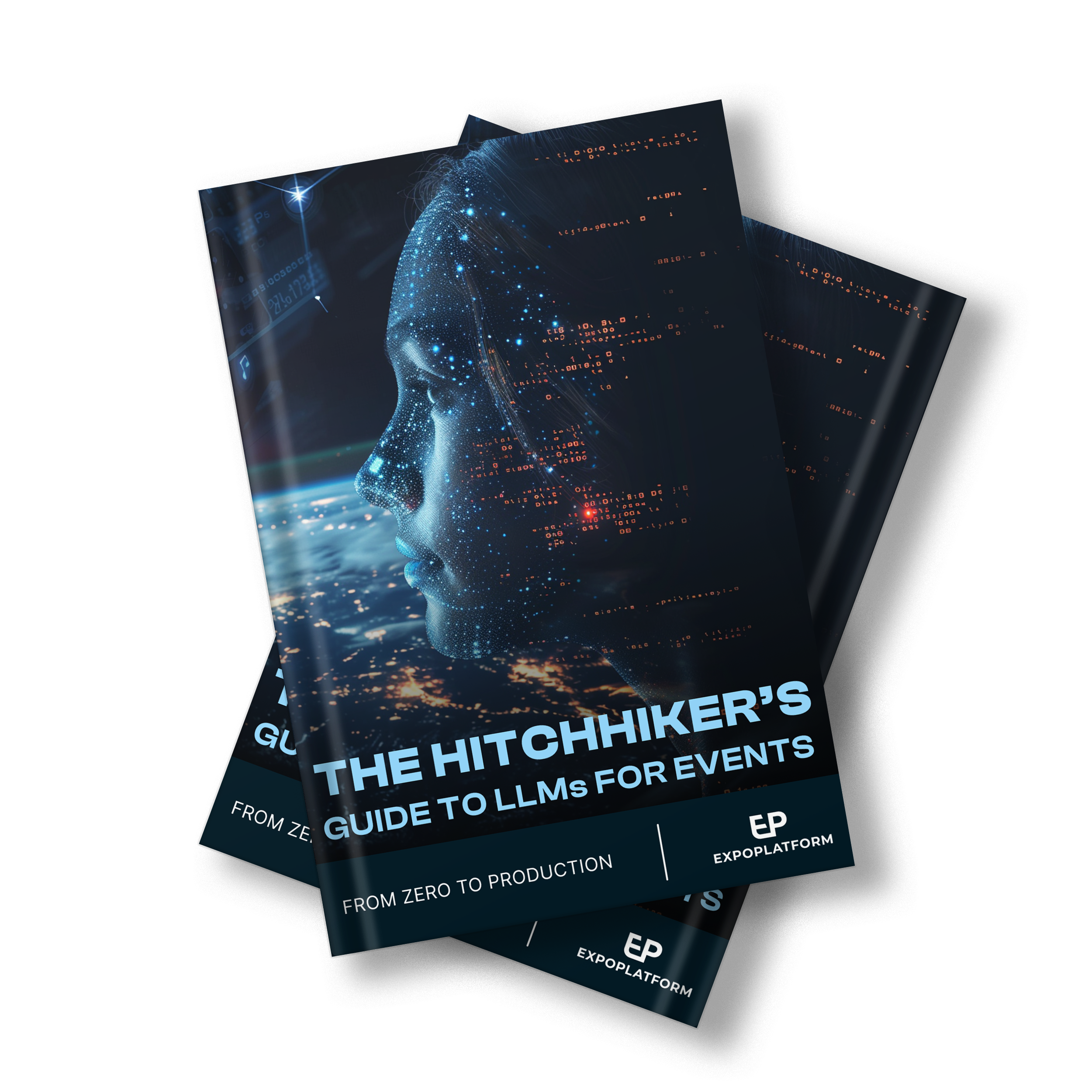
How to effectively measure engagement at virtual events?
If you go by the industry chatter around virtual events, a lot of it revolves around effective attendee engagement, or as event industry blog EventMB reported – the lack of it.
In previous articles we have discussed how challenges like screen fatigue and distractions can be overcome to improve attendee engagement at virtual exhibitions, or the different post-event activities you can plan to stay connected with your remote audience.
Now, a more pertinent question arises: how do you quantify this digital engagement and derive insights to create better events in the future?
This is where you can leverage the huge advantage virtual events have over physical ones – EVERYTHING CAN BE MEASURED.
From the moment attendees log in, to the time they spend at a session, the people and digital booths they interact with or the meetings requests they make, every interaction can be analysed in granular detail.
Drawing on our experience of organising numerous virtual exhibitions and trade shows with our clients and partners, here are the key engagement metrics you should look at:
#1 Drop-off rate
How engaged were attendees during different sessions in your event? The drop-off rate, which is the rate at which people start leaving a session, gives you an idea of how effective the session was: the quality of speakers, the structure and interest in the topic. Training sessions and educational workshops usually have a lower drop-off rate than other types of sessions without such content, for example.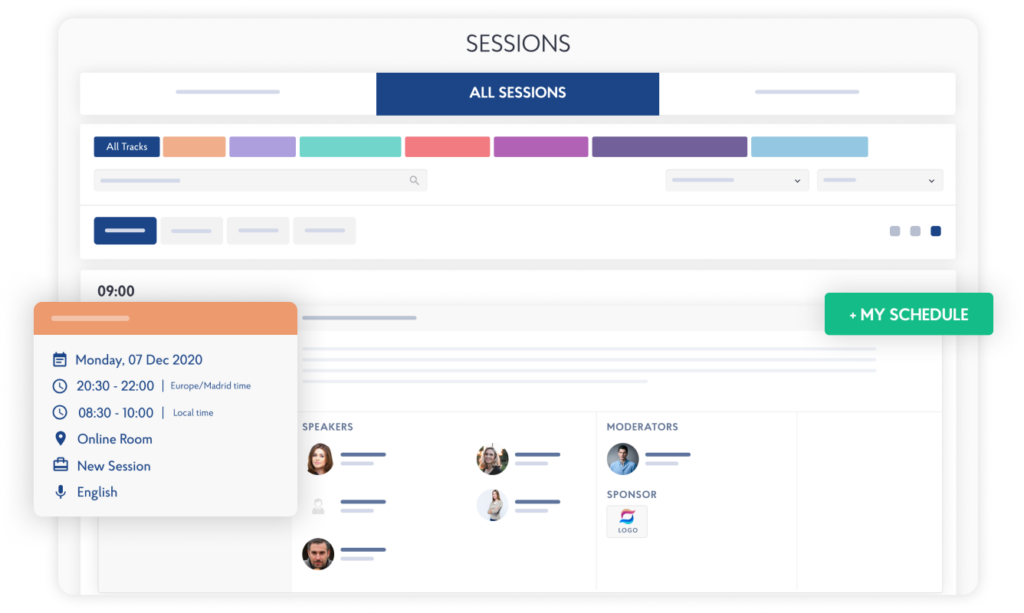 By analysing the drop-off rate, you can make recommendations for future events, such as:
By analysing the drop-off rate, you can make recommendations for future events, such as:
- Sourcing better quality speakers for future events or re-inviting those whose sessions were popular.
- Improving in-session engagement by having dedicated moderators.
#2 Total engagement
Audiences at virtual events ask questions through the chat feature and participate in live surveys and polls if the sessions are compelling enough. Similarly, interactive virtual booths with language translation features for attendees who are not native English speakers would see higher engagement in the form of unique views and chat queries. 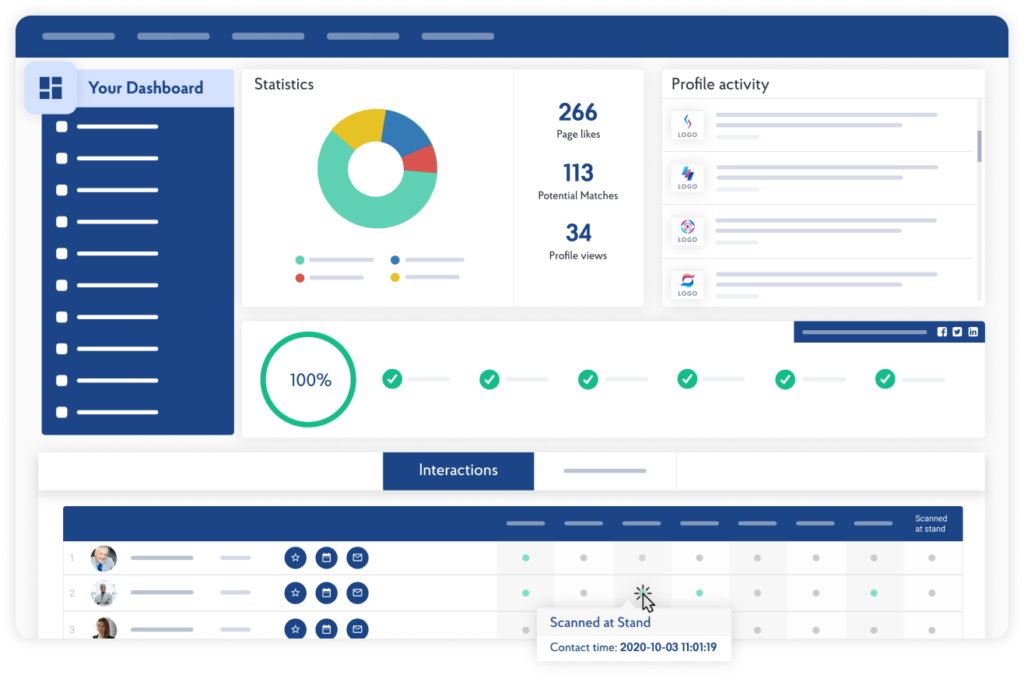 To calculate the engagement rate, you can count the summation of interaction activities like TOTAL answers in chats, Q/A and polls and divide it with TOTAL number of attendees in the session.
To calculate the engagement rate, you can count the summation of interaction activities like TOTAL answers in chats, Q/A and polls and divide it with TOTAL number of attendees in the session.
You can also set up a leaderboard by gamifying activities, including practices such as quizzes, virtual scavenger hunts, virtual selfies through the mobile event app, each of which provides its own unique way to measure attendee engagement.
#3 Favourites made through AI matches
Virtual event platforms with AI matchmaking capabilities can connect attendees to different people, products and content, as per their preferences. By using the ‘favourite’ feature, an end user can indicate whether the recommendation by the AI algorithm is relevant or not.  The match relevance is improved on the basis of choices made by the attendees; a higher number of ‘favourites’ means the attendees are making an effort to filter through the noise and find their desired match.
The match relevance is improved on the basis of choices made by the attendees; a higher number of ‘favourites’ means the attendees are making an effort to filter through the noise and find their desired match.
#4 Number of meetings requested, confirmed meetings
Attendees can put in a number of meeting requests, but you need stats for confirmed meetings to see how many of these eventually converted into online meetups. A higher number of meetings requested indicates active engagement from attendees, that they are making use of the networking features in the platform. Healthy numbers for confirmed meetings reflect the fact participants are showing interest in exploring new opportunities.
A higher number of meetings requested indicates active engagement from attendees, that they are making use of the networking features in the platform. Healthy numbers for confirmed meetings reflect the fact participants are showing interest in exploring new opportunities.
#5 Sponsor and exhibitor analytics
You can track real-time sponsor statistics on interactions shown by prospects, such as a click on an exhibitor or sponsor profile, banner adverts, pop-ups or just a regular search in the directory. This data shows sponsors and exhibitors the details of the exact person who interacted with their material, helping them craft their strategies for smarter lead generation.
This data shows sponsors and exhibitors the details of the exact person who interacted with their material, helping them craft their strategies for smarter lead generation.
Conclusion:
These audience engagement metrics skim the surface of the total data generated during a virtual event. Click here to learn about the major KPIs you need to track for a successful online exhibition or trade show.
There's more you might like

The week in events: Expo2020 marks another industry milestone
Your weekly event industry news round-up from ExpoPlatform: the launch of the world’s biggest event since the pandemic outbreak, consulting over vaccine passports for shows in England – and questions over the future role of Big Tech in our industry. Expo 2020 Dubai kicks off with a bang The world’s largest global gathering since the ...
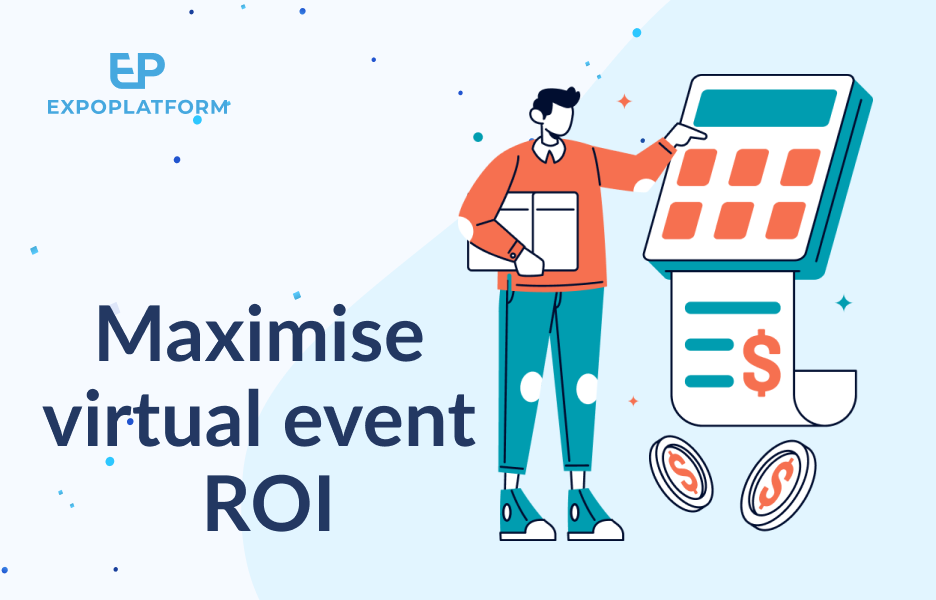
Five ways to maximise virtual event ROI
Virtual events offer a wealth of opportunities to increase ROI. These formats are on the rise but doubts persist on their ability to generate business ROI. Many organizers have struggled in providing the desired returns in the online sphere compared to an in-person one. These challenges can make it difficult to convince sponsors and exhibitors ...
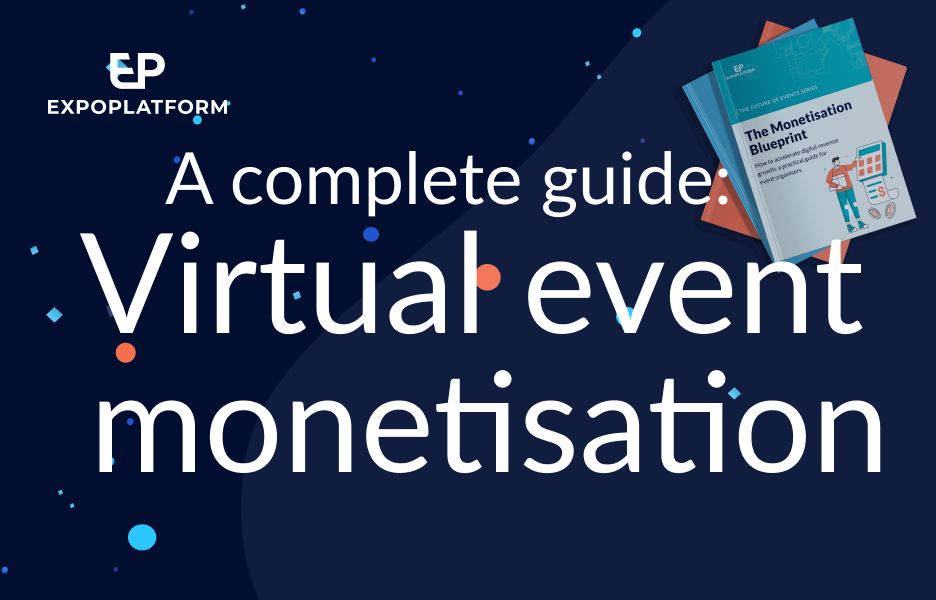
Virtual event monetisation: an organiser’s complete guide
A wealth of options for virtual event monetisation have opened amid the digital transformation our industry has been through since 2020. ExpoPlatform’s latest ebook – the Monetisation Blueprint – sets out how organisers can make the most of opportunities brought through these new channels. This includes extending the life cycle of your in-person show through ...

